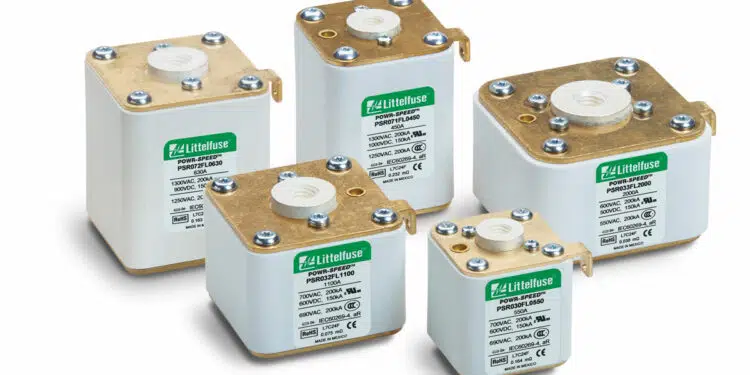source: Littelfuse news
CHICAGO, May 24, 2017 – Littelfuse, Inc., the global leader in circuit protection, expands its award-winning line of high-speed fuses for protection of power semiconductor devices used in industrial equipment.
The POWR-SPEED® PSR Series line of square body fuses combine extreme current limitation, excellent cycling capability, and low watt-loss design in a direct bus-bar mount construction with blown fuse indication included. The square body design accommodates high current ratings with enhanced DC performance in a smaller footprint than the traditional round body style of high-speed fuses.
“DC applications such as energy storage, electric vehicle charging stations, and uninterruptible power supplies (UPS) are increasing and the manufacturers of these products have a growing need for better DC protection of their system components,” explains Craig Greeson, product manager, power fuses at Littelfuse. “The POWR-SPEED® PSR Series has the best DC protection performance available in the market today.”
Key benefits of the new PSR Series include:
- DC voltage ratings up to 20% higher than competitive products, with DC interrupt ratings increased up to 70%
- Flexibility to mount directly to a system’s bus-bar
- Visual blown fuse indication is standard to assist in determining the state of the fuse, while an optional micro switch is also available for remote indication requirements
- Global certifications: cURus, CCC, IEC
- Class aR performance according to IEC60260-4
The expanded line includes a voltage range of 550VAC to 1300VAC, 500VDC to 1000VDC. Current ratings range from 125 to 2000A and interrupt ratings are 200kA AC and 150kA DC. These fuses are used in many applications including power conversion equipment, low and medium voltage drives, DC common bus protection, battery protection, power supplies, and industrial heaters.






























